Rogitama Private Nature Reserve, about 3 hours drive north of Bogota, is a true success story. Founded by Roberto Chavarro and his family in the early eighties, this little reserve has been dropped slap-bang into the birding spotlight by the recent claims of the rediscovery of the Bogota Sunangel Heliangelus zusii, a species that is known from one record – a skin from 1909! Whist filming three TV shows for ProExport Colombia, we received the news that the bird had been rediscovered and I prolonged my trip for a few days to try and film the mysterious bird, whist the rest of the crew, including Richard Crossley (who, besides being the author of the Crossley Guide, happens to be a REALLY good table-tennis player!), returned to the USA.
Before I begin what is sure to be a controversial post let me start by saying that, whilst I believe that I have formed my own opinion on this bird, anything is possible. Nothing can be ruled out at this stage. I am not an expert on neotropical birds – far from it! An amateur at best. There are many more Colombian ornithologists who are way better qualified to offer an opinion. And I believe that some of them may remain silent until all evidence, including DNA results, comes to light. But, having spent three days watching, filming and recording this bird’s behavior, I believe it is important to share my thoughts. Albeit premature thoughts.
Let me start with why I think that Bogota Sunangel, according to the description of the skin, can be ruled out. I am referring to the detailed analysis of the bird from Gary Graves’ description of the skin in Vol 110 No 1 of The Auk (January 1993).
1. “A brilliant pale golden-green frontlet extends from the forecrown posteriorly to an imaginary line drawn between the centers of the orbits.” Said bird has a brilliant green shield that extends all the way to the back of the head.
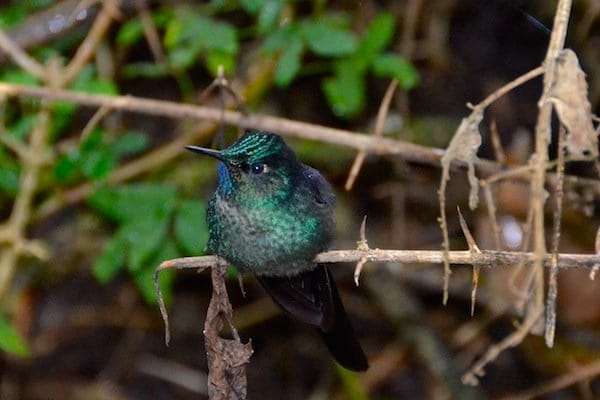 The green shield extends way beyond the eyes
The green shield extends way beyond the eyes
2. “When viewed head-on in direct light, the head and breast appear black and contrast with the greatly with the golden-green gorget and frontlet.” Said bird appears to have a blue rather than “golden-green” gorget. Although important to remember that light and angles play a factor in gorget color appearance, not once did I notice the gorget appearing golden-green.
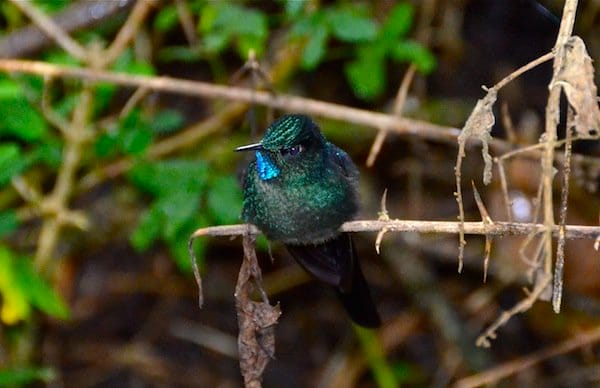 Gorget appears blue rather than golden-green
Gorget appears blue rather than golden-green
3. “Feathers of the upper breast are bluish-black with narrow buffy-gray margins”. Said bird appears to have a grayish green breast when photographed with flash. In other light situations the breast appears dark.
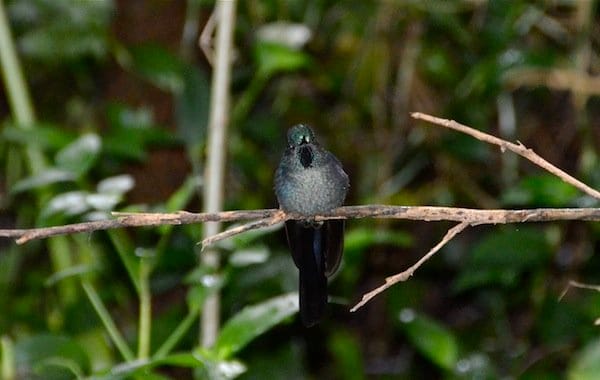 The breast appears pale grayish when photographed with flash.
The breast appears pale grayish when photographed with flash.
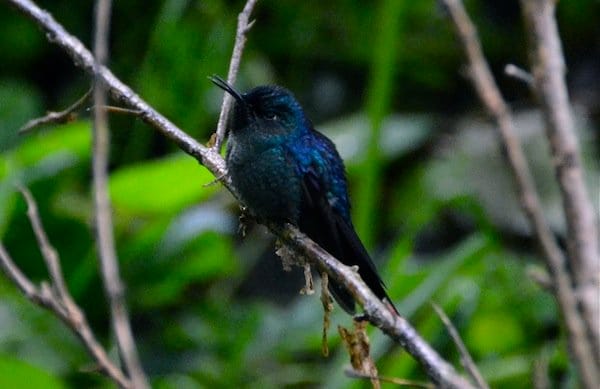 In other light situations breast can appear dark, even bluish black
In other light situations breast can appear dark, even bluish black
4. “The deeply forked tail (fork 54% of length) is glittering dark purple above, duller and less iridescent on the lower surface.” Said bird does have a forked tail but this is hardly ever shown and tail is mostly held closed in the manner of sylphs.
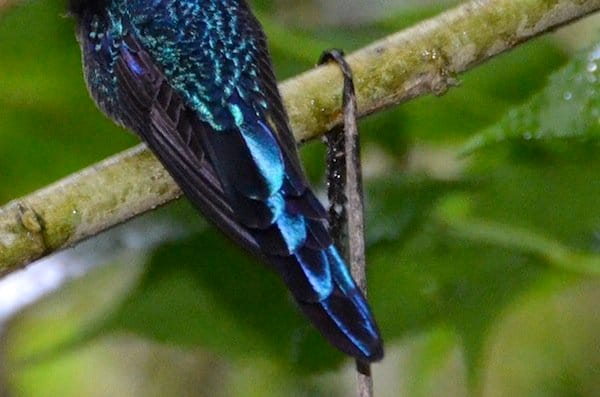 Tail is held closed in flight and when perched
Tail is held closed in flight and when perched
The bird is very curiously colored and almost chameleon-like in its ability to change color under different lighting/distance situations. At first glance the bird appears dark violet-purple. Closer inspection reveals a grayish/green breast and dark violet-purple back. In addition to the afore-mentioned shield and gorget, the bird also sports a pale whitish vent and undertail coverts. The bill is short and straight.
My conclusions are thus as follows:
1. This bird is not the long-lost Bogota Sunangel
2. The confusion has arisen due to lighting issues in the initially released photographs
3. I believe the bird to be one of the following: A dark violet color morph of Long-tailed Sylph, a new species of sylph, a new sub-species of Long-tailed Sylph or a hybrid sylph.
Although I am pretty confident that this species is not the long-lost Bogota Sunangel or even a Heliangelus, more will be known once DNA testing has been done. It is also important to take into consideration the following possibilities:
1. There is more than one bird at Rogitama, each with differing coloration
2. Bogota Sunangel is only known from one skin. How much variation was there in this species?
I received word that a bird was mist-netted on the 10th December 2011 and DNA samples were taken. Bogota Sunangel or not, this is still potentially excellent news for Colombian birding. A new sylph species? A hybrid or just a variety of Long-tailed Sylph? Only time will tell.
Many thanks to Rogitama Private Nature Reserve, Roberto Chavarro and his gracious family, ProExport Colombia and Daniel Uribe and Sergio Ocampo from Birding Tours Colombia.
The Chavarro family are to be commended on an excellent job rehabilitating degraded farmland purchased in the early 1980’s. The reserve is an example to others on how one family can make a massive difference to the preservation of birding habitat.
I have put together the following short video detailing our adventure and footage of the mystery bird. Enjoy!
httpvh://www.youtube.com/watch?v=Ix-kZnHctsw




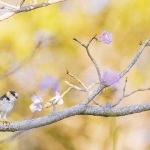
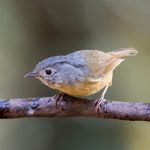





Interesting stuff. I look forward to finding out more and also the prospect that a good sounding local project will get lots of visitors soon!
Indeed Duncan – a most worthwhile project and I hope they benefit from any exposure.
Whatever the hummer turns out to be: it shows that this private nature reserve is located in an area that has not been covered enough by birdwatchers. And that in itself is the best promotion the area can get!
Amazing story.
Please keep us updated, James!
Great photography. Thanks for the ‘advernture’ in Columbia. We were there many years ago but only as far as Cartegna [cruise ship/trip]. Beautiful little bird…missing species or not. Thanks James, irene@
Hi guys!
An important comment. The name of the country is Colombia not Columbia. By!
Any updates on this?